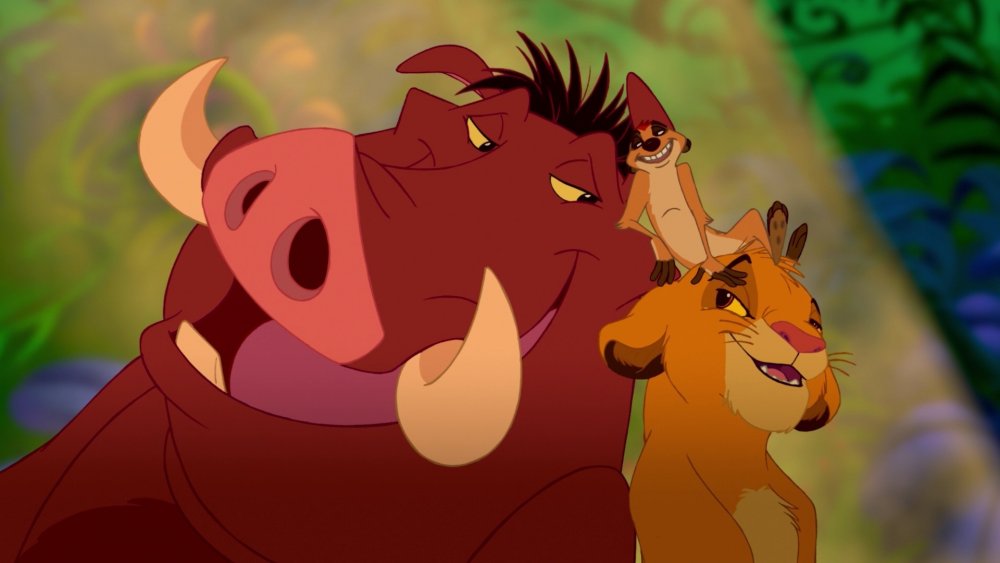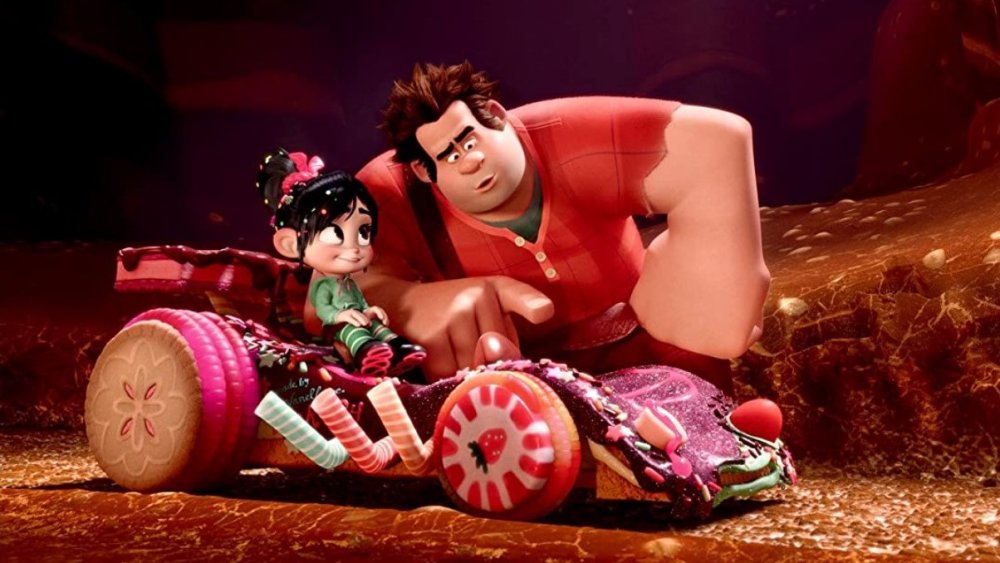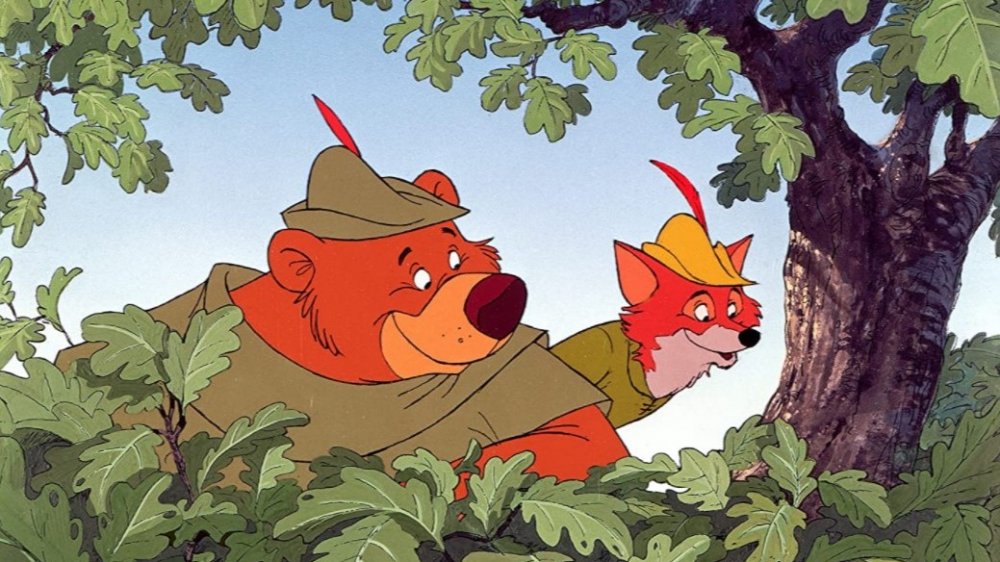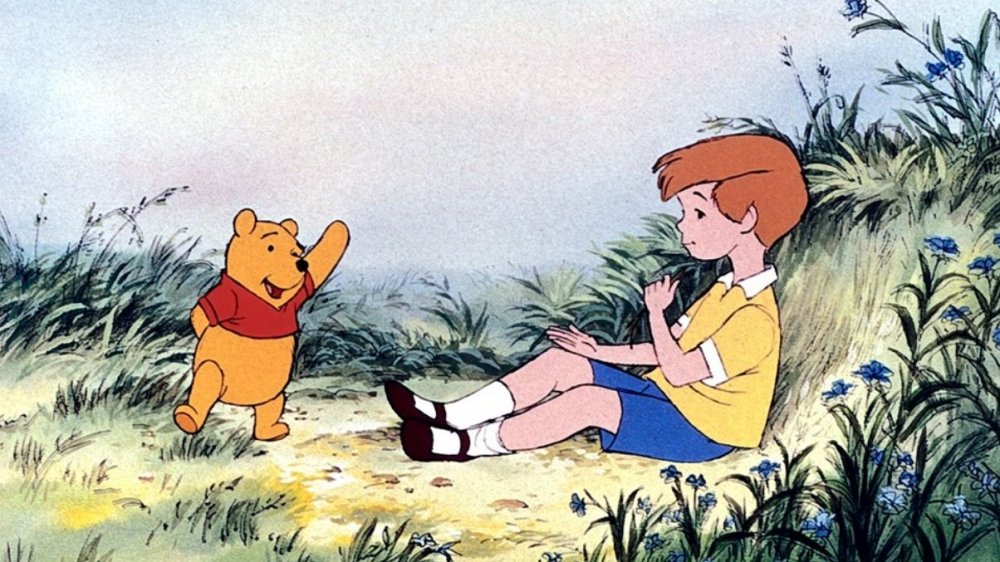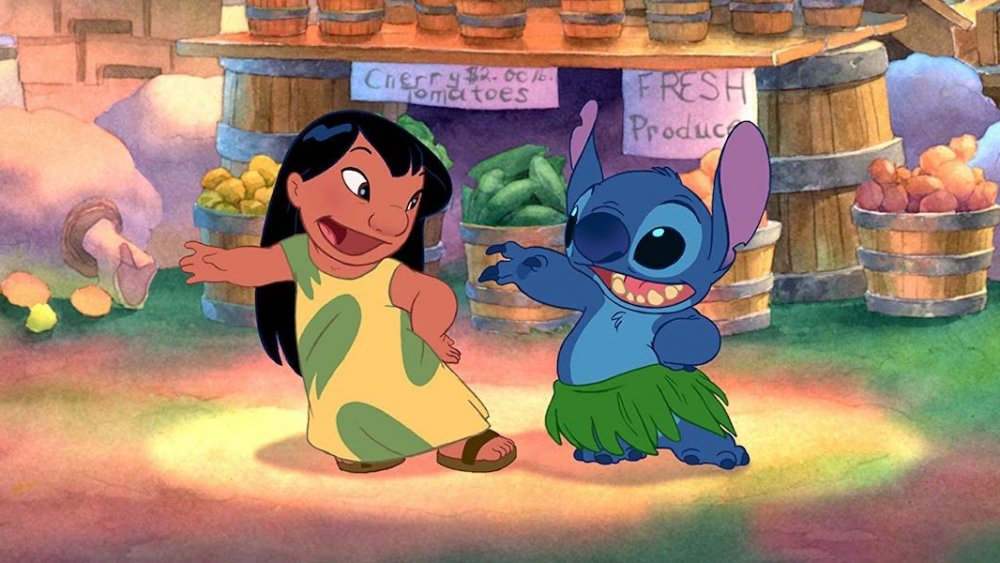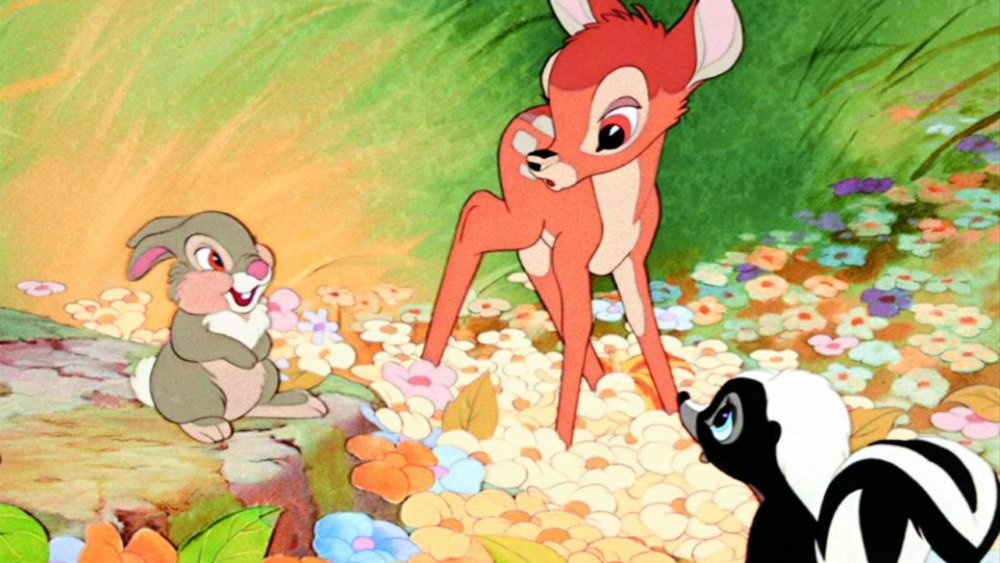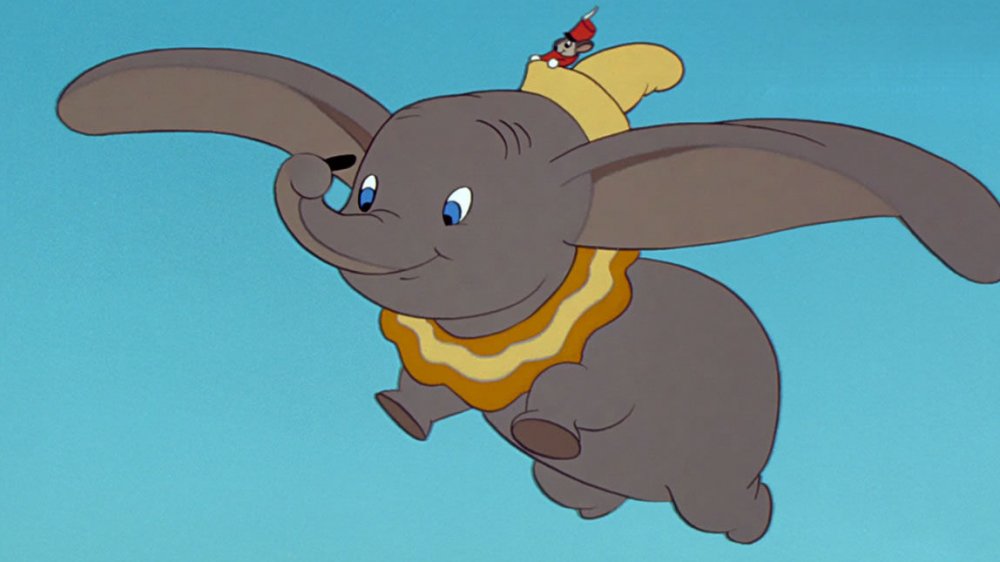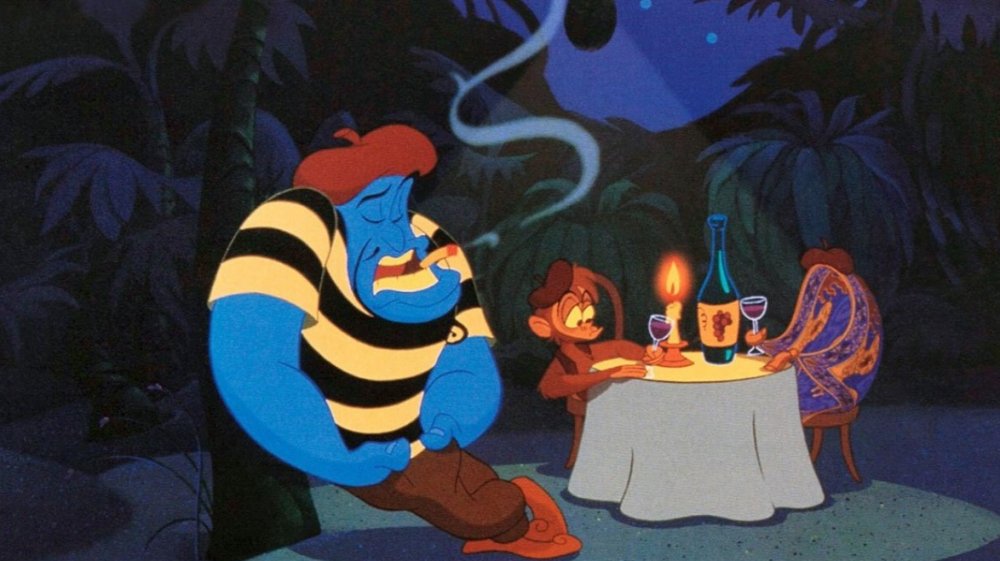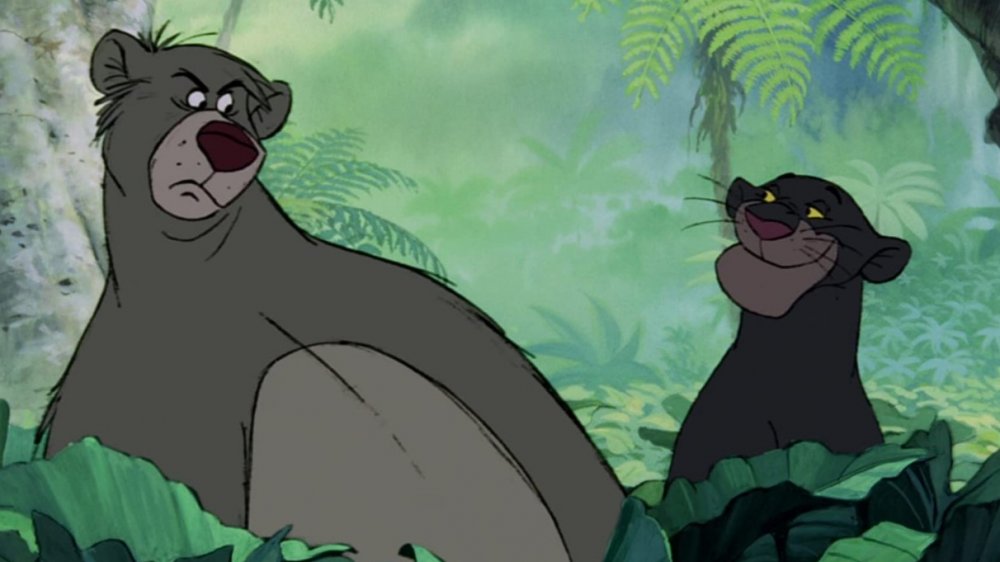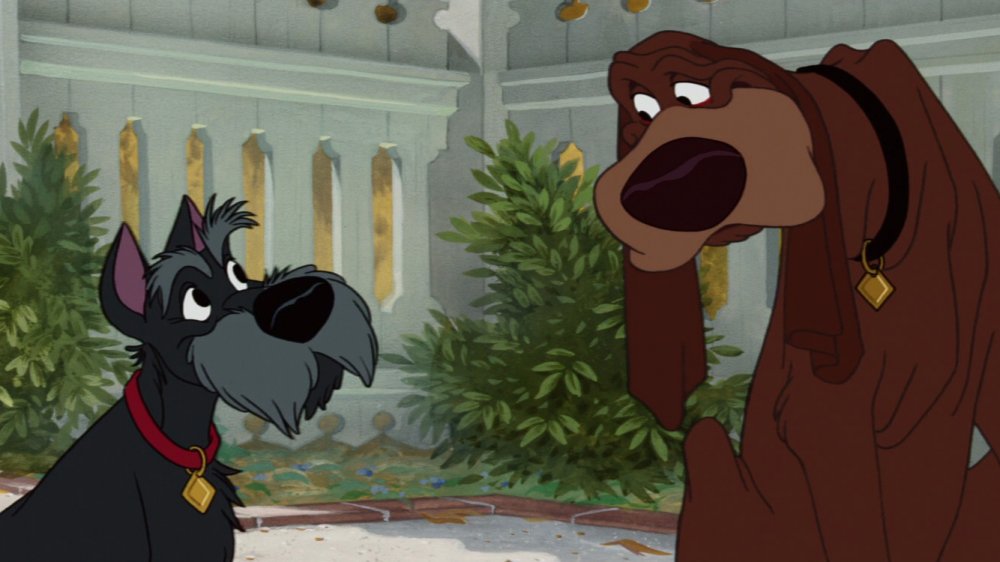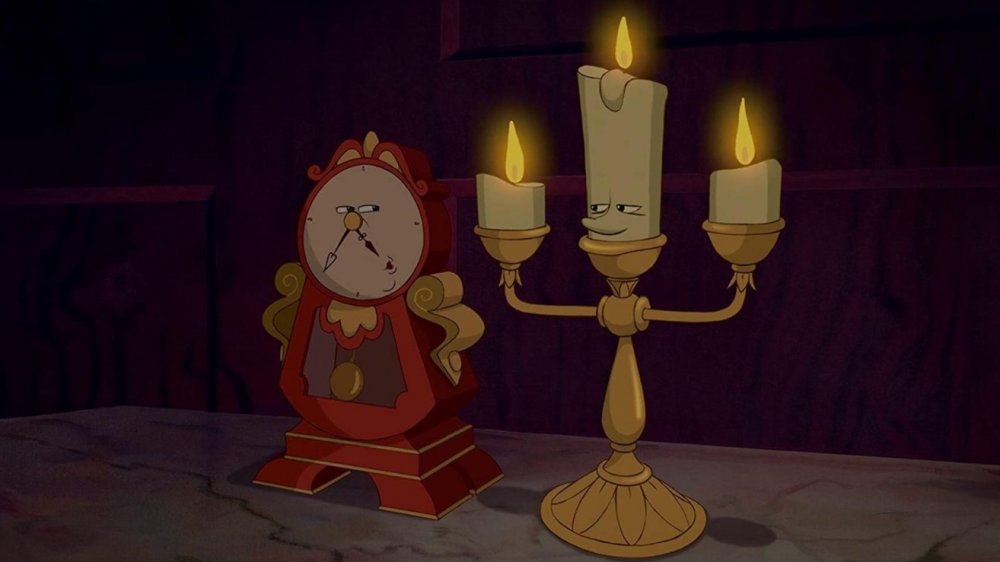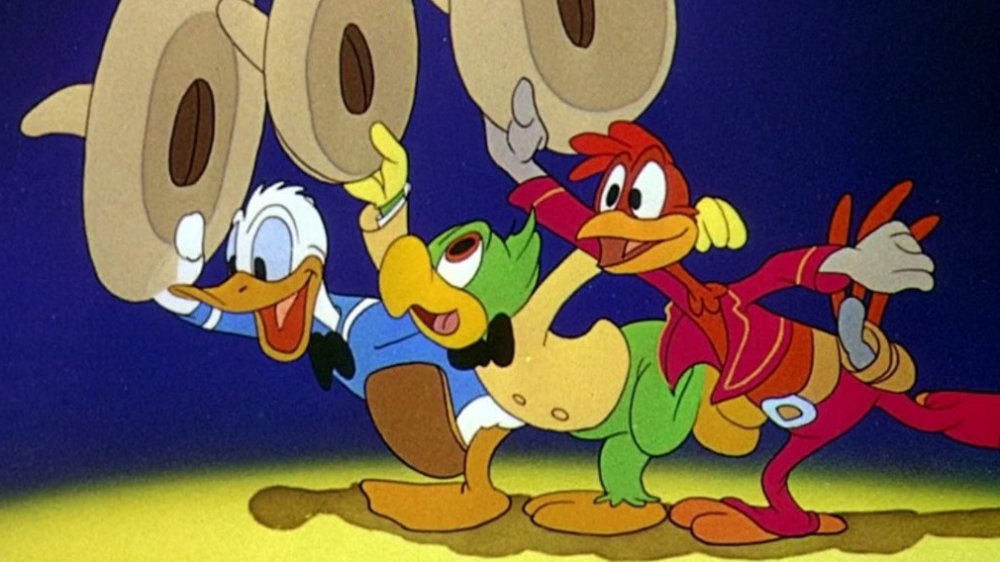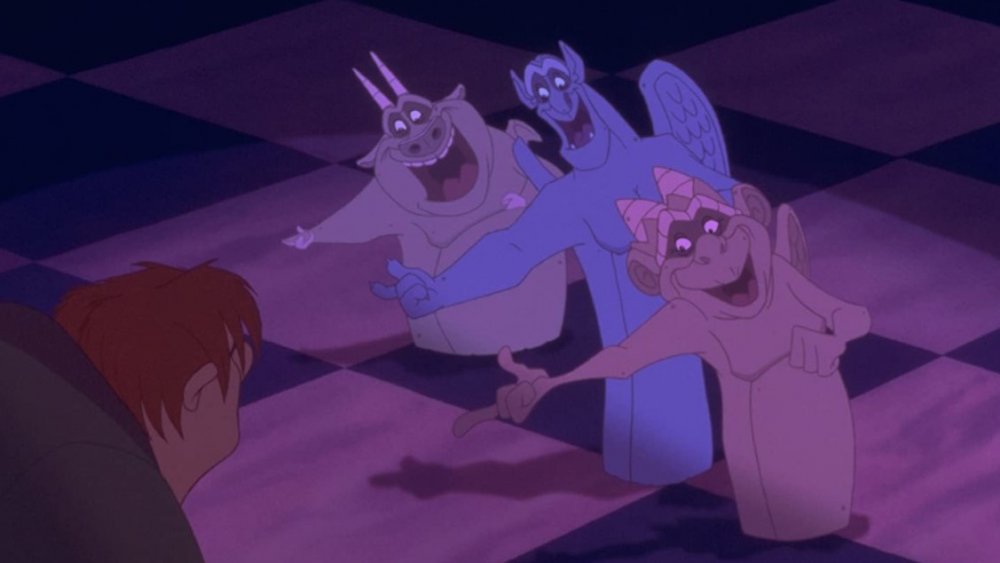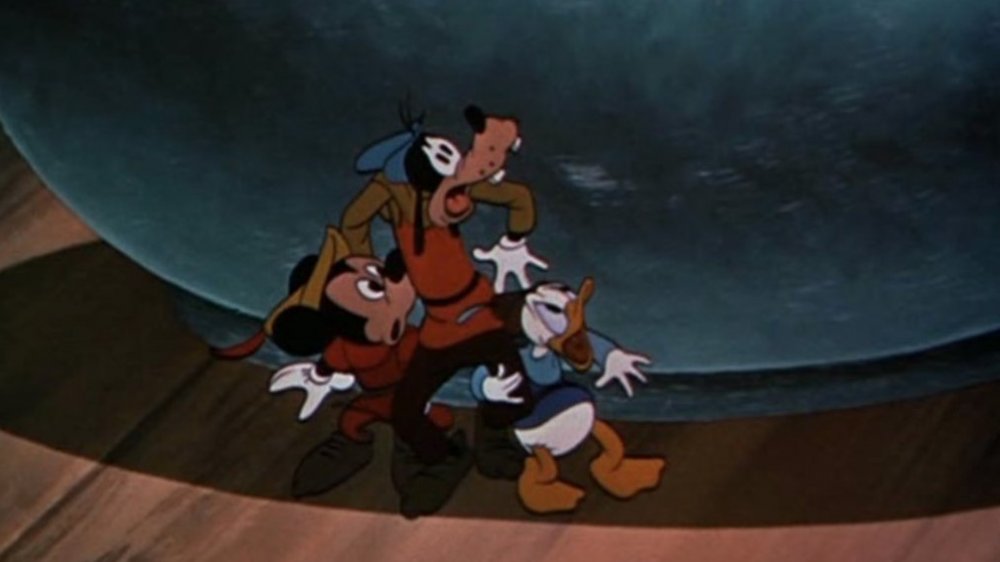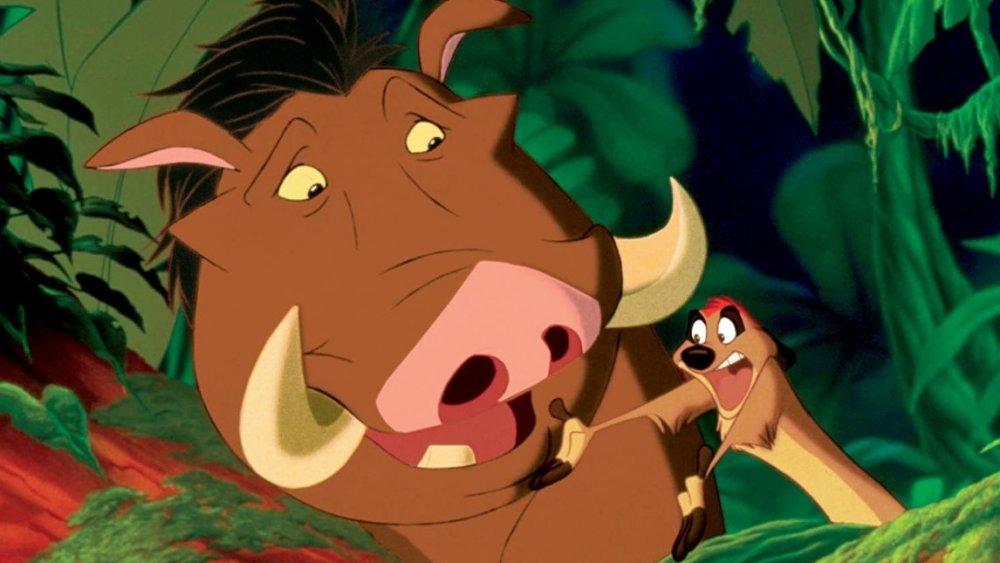The Greatest Friendships In Disney Animated Movies
Whether they're surfing the waves of the Pacific or the connections across the Internet, Disney animated movies tend to focus on growth and growing up. But in real life, these two things rarely happen without friends who support us, call us out on our nonsense, and get us to laugh at ourselves. And fortunately, Disney films have no shortage when it comes to the friendship department.
Sure, these cinematic buddies are often menaced by harrowing villains, but Disney's animated pals still hang in there throughout life's slings and arrows, setbacks, heartaches, and celebrations. And that's why we consider them our friends, too. These BFFs might be a hodgepodge of household objects, animals, aliens, or simply full of stuff and fluff, but they know how to encourage our on-screen heroes and sometimes even change the audience along with them. Here are our picks for some of the greatest friendships in Disney animated movies.
Vanellope and Ralph are both heroes in Wreck-It Ralph
Disney's female characters don't have a lot of friendships beyond animal sidekicks, and they don't have many adventures that aren't love stories, and those are two reasons why Vanellope and Ralph from 2012's Wreck-It Ralph are so refreshing.
These video game characters — who, like everyone else in their consoles, have lives off-screen — initially hang out because of a handshake deal. He says he'll help build a car for her to compete as a racer in Sugar Rush, and she says she'll give him her winning medal so he can prove his worth back home. And part of Wreck-It Ralph's charm is the theme that you don't have to embrace whatever role life makes you play, and as these two learn, it's easier to be yourself with a friend who likes you just as you are. Ralph in his game might be a ham-handed bad guy who smashes windows and Vanellope is a "glitch" who blips around the board, but they're heroes to each other, complete with silly jokes, nicknames, and encouraging spunk. That suits them just fine.
Robin Hood and Little John have Disney's most heroic friendship
Robin Hood and Little John have been friends on the page since the 1880s, when author Howard Pyle first introduced the swashbuckling, honorable outlaw who only stole from the rich to give to the poor. Disney's Robin Hood in 1973 then reimagined the wily Robin as a fox and Little John as a bear, but the film follows their original friendship as two opposites who recognize and respect each other's skills. Plus, they know how to have fun, even when rascals like the villainous Sheriff of Nottingham are after them. After all, friends who steal from the rich together, they stay together. And as singer-songwriter Roger Miller put it, these two enjoy nothing more than walking through the forest, laughing at what each other have to say, and having a good time. Oo-de-lally, that does sound like a pretty great friendship.
Winnie the Pooh and Christopher Robin know how to carpe diem
The thought that wherever they go, "in that enchanted place on the top of the forest, a little boy and his bear will always be playing" is enough to send any adult reaching for tissues. That's the power of Winnie the Pooh and Christopher Robin, two friends who are the epitome of childhood innocence. Author A.A. Milne famously based his Pooh stories on the expeditions that his son, Christopher Robin Milne, invented for his plush pals in the Hundred Acre Wood, and Disney helped audiences around the world fall in the love with the pair.
The studio first put Pooh and Christopher on the screen in 1966's Winnie the Pooh and the Honey Tree, a short later folded into the 1977 film The Many Adventures of Winnie the Pooh. The young Christopher can see trouble ahead for many of Pooh's plans, such as coating himself in mud to disguise himself as a rain cloud. But the boy can't help but support his "silly old bear," who doesn't have a mean bone in his honey-colored body. Whether they're looking for a donkey's lost tail (as in 2011's Winnie the Pooh), playing Poohsticks, or rustling up a smackerel for a snack, these two know how to live in the moment, going wherever the day takes them.
Lilo and Stitch are all about ohana
An eccentric little girl alienated from her peers after her parents' death turns out to be the perfect guardian for an alien whose keepers never saw his potential. Lilo lives on the Hawaiian island of Kauai with her older sister, Nani, who struggles to hold a job while taking care of the household chores and keeping Lilo out of trouble. When Nani thinks adopting a pet will be good to help teach Lilo responsibility, Lilo chooses Stitch, a blue creature with huge eyes, floppy ears, and a short fuse.
And, oh yeah, Stitch is an escaped intergalactic experiment who was created for destruction, and he meets Lilo while hiding from a couple of alien bounty hunters. But reading her books like The Ugly Duckling, listening to her Elvis Presley records, surfing, and playing the ukulele touches a heart he didn't know he had. Stitch learns manners, but more importantly, he also learns the meaning of ohana, or family, and by the film's end, it's clear these pals will never leave each other behind.
The Disney friendship between Bambi, Thumper, and Flower lasts into adulthood
The young trio of 1942's Bambi shows how some friendships from childhood remain with you in adulthood, even if you don't see each other for a while. Plus, they have a couple of the best "meet cutes" in the Disney canon. As a fawn, Bambi meets Thumper the rabbit while testing his hooves out on the ice during his first winter. As part of a large colony, Thumper is a bit smarter about the world than Bambi, but he's not an insufferable know-it-all. Rather, he's that pal who wants to take someone under their wing so they don't make a fool out of themselves by mixing up, say, birds and butterflies.
But the naive Bambi also receives a lesson about viewing things in a new light. When the fawn sniffs out a young skunk nestled in a bunch of flowers, Bambi thinks the skunk is a flower, too. Thumper flops over, beside himself with laughter, but the skunk straightens up a little taller. "That's all right," the critter says. "He can call me a flower if he wants to." The name sticks, even when Bambi, Thumper, and Flower have children of their own, proving how some relationships can stand the test of time.
Timothy Q. Mouse takes Dumbo to new heights
The 1941 film Dumbo has what Disney now calls "outdated cultural depictions," but its protagonist is one of the studio's sweetest characters — a little elephant with expressive eyes and big ears who never says a word. Fortunately for him and for viewers, he has a plucky advocate in Timothy Q. Mouse.
A circus veteran, Timothy is streetwise, but like another stand-up Brooklyn guy (Steve Rogers, aka Captain America), he can't stand a bully. When the circus folks lock up Dumbo's mother as a "mad elephant" for trying to protect her son from kids picking on him, Timothy bristles at the other elephants and their cruel gossip. He scares them on Dumbo's behalf, then befriends the youngster with a peanut and a promise to help free his mother. The best way to do that, he says, is to make Dumbo a star.
Timothy's plans aren't perfect, but he's protective and genuinely wants Dumbo to succeed. Plus, when times get tough, the mouse has moxie to spare. Sometimes to fly, you don't need ears that can double as wings. You just need belief in yourself and a devoted friend who believes in you, too.
You ain't never had a friend like Genie and the Magic Carpet
It seems unfair to single out one friend from the ensemble of 1992's Aladdin because, let's face it, the Genie and the Magic Carpet feel more like friends to Aladdin than sidekicks. That's because Aladdin regards them as "diamonds in the rough" and his equals, even if he has trouble recognizing his own value.
And like good friends, they help him see that. This dynamic first appears when he explores the Cave of Wonders and meets the Magic Carpet. Buried in isolation for years, the carpet impishly wants to play. Abu, Aladdin's monkey, doesn't like it messing with his tail, but Aladdin beckons the carpet closer. Sure, the youth needs directions to the Genie's lamp, but his kindness pays off when the carpet weaves him out of danger as the cave collapses.
As for the Genie, wondrously voiced by Robin Williams, he starts out as Aladdin's servant by nature of being released from the lamp. ("Hey, rug man!" Genie greets the carpet, getting some tassels for a high-five.) But as the film progresses, they act more like peers, with Aladdin sharing his insecurities and the Genie providing advice as well as saving Aladdin's life.
Baloo and Bagheera from The Jungle Book are a very unusual duo
Baloo the bear and Bagheera the panther from 1967's The Jungle Book are kind of like The Odd Couple — a pair of opposites who wouldn't really hang out except under very specific circumstances. But similar to the roommates in that often-adapted Neil Simon play, these two come to appreciate each other's qualities and manage to even find some common ground. The fastidious Bagheera is as proper and responsible as Baloo is laid-back and sloppy. Their attitudes at the outset on whether the child Mowgli should stay in the jungle cause them to clash, and their temperaments rankle each other throughout the movie. But just like real-life friends who tolerate each other because they adore a mutual pal, these two discover that the "bear necessities" of protecting the young "man cub" from the deadly tiger Shere Khan far outweigh their differences.
Jock and Trusty are the secret heroes of Lady and the Tramp
Consider these two old-timers who still can surprise each other. Lady and the Tramp, of course, is about the romance between Lady, a cocker spaniel who belongs to a family, and Tramp, a streetwise mutt. But the 1955 film also has an enduring friendship on the sidelines between Jock, a Scottish terrier, and Trusty, a bloodhound.
The two neighborhood dogs befriend Lady as a puppy when she acquires an official collar, then later try to soothe her worries when she's confused about what a new baby in the household means. These two have been around each other for so long, they practically finish each other's thoughts (at least Jock does whenever Trusty seems to ramble). But they spring into action when Tramp is falsely accused of attacking the baby. Hearing that Tramp actually saved the child from a rat, Jock and Trusty chase and stop the wagon carting Tramp away to the pound, thanks to Trusty's sense of smell. Trusty hurts his leg in the process, but by the film's end, Lady's owners welcome them like the heroes they are.
Lumiere and Cogsworth are the perfect workmates
In Beauty and the Beast, Lumiere is a suave candelabra, and Cogsworth is a clock who seems wound a bit too tight. But despite their differences, these longtime work friends needle each other out of affection more than spite.
Before their transformation under the spell that also cursed the prince in this 1991 classic, turning him into a beast, both were steadfast castle servants. Lumiere was the castle's maître'd while Cogsworth was the butler and majordomo, the one tasked with running the household to the prince's liking. Sure, one might think Cogsworth is a bit stuffy compared to the outgoing and flashier Lumiere. But the butler's underlying politeness makes him a great peacekeeper whether he's human or not, especially when he puts up with Lumiere's ribbing so that everyone can lighten up. They might occasionally bicker, but Lumiere and Cogsworth also understand each other well, making them perfect foils for each other.
The Three Caballeros are three real amigos
Long before the Three Amigos headed to Mexico, Walt Disney Studios flew south of the border with the 1944 film The Three Caballeros, introducing two friends of Donald Duck from outside the United States. First up, there's José Carioca, a charming, amorous, cigar-smoking parrot from Brazil, and then we've got Panchito, a hot-headed, pistol-packing rooster from Mexico.
Disney created the film as part of the U.S. Good Neighbor policy of World War II, meant to bridge differences between America and some of its neighbors to ward off enemies and introduce American viewers to Latin American culture. While their film doesn't have an overarching plot (it's more of a travelogue with music), these "three happy chappies with snappy serapes" are amiable company. Panchito is more eccentric than Donald (as if that were possible), and José is the smooth-talker who can turn his umbrella into a guitar, flute, or trombone. Together, they're protective of Donald and their unflappable bond. It's enough to cause audiences to wonder what other escapades they've seen together.
Quasimodo's relationship with the gargoyles is rock solid
Forced to live in the bell tower of Paris' landmark Notre Dame Cathedral, the hunchback Quasimodo has no friends at the start of 1996's The Hunchback of Notre Dame except for a trio of stone gargoyles. Laverne, Victor, and Hugo — partly named after Hunchback author Victor Hugo — are nothing but solid toward "Quasi" in their support and encouragement. Although some viewers wonder if they're real or figments of Quasimodo's imagination (Jolly the goat is the only other character who sees them move), they still provide the wisdom that sometimes a person knows at heart but needs to hear a friend say.
For example, when Quasimodo yearns to go to the colorful festival below that he's observed from afar for years, the three urge him to sneak out against the wishes of his cruel "master," Frollo, the city's ruthless minister of justice, setting the plot in motion. "Take it from an old spectator," Laverne says, full of gravelly warmth. "Life's not a spectator sport. If watchin' is all you're gonna do, then you're gonna watch your life go by without you."
Mickey Mouse, Donald Duck, and Goofy are the ultimate Disney friends
Mickey Mouse, Donald Duck, and Goofy have known each other onscreen since the 1930s, making them the longest-running friends on our list. The modest and cheerful mouse, the unlucky and sputtering duck, and the clumsy goofball dog have little in common on the surface, but they're true-blue buddies, perhaps because they've been right alongside each other through thick and thin. That implied history and dedication appears whenever these three are together, never losing sight of a collective goal, whether on Disney Junior's Mickey Mouse Clubhouse (where Minnie, Daisy, Pluto, and Clarabelle join the group) or in classics such as 1947's Mickey and the Beanstalk.
In the latter, even drought and starvation can't separate them. Their friendship is tested when Mickey trades their cow for money instead of killing it for beef, buying beans that the optimistic mouse believes are magic. The dejected Donald throws them to the floor, where they slip through a hole and sprout in the moonlight, carrying the three into a giant's kingdom in the clouds. But these friends waste no time pointing fingers over how they got there. Instead, their curiosity and enthusiasm take over, sending them exploring in a leaf boat, bouncing around the giant's dinner table, and banding together to free a magical harp, restoring their valley's prosperity. No matter what's ahead, their talent for laughter isn't far behind.
Timon and Pumbaa have no worries about their friendship
If Simba had stuck with the "no worries" philosophy of "Hakuna Matata," he might not have reclaimed the birthright that his treacherous uncle, Scar, tried to deny him in 1994's The Lion King. But as a cub in mourning and alone after Scar engineers the death of Simba's beloved father, Mufasa, Simba needs some friends to help him heal. They turn out to be Timon, a wisecracking meerkat, and Pumbaa, a warthog whose odor bothers everyone except his pint-sized, bug-eating buddy.
With his rapid chatter, Timon might seem like the brains of this outfit, but Pumbaa is actually sharper and not just because of his tusks. When the two run across an unconscious Simba, Pumbaa convinces Timon to lend the hurt youngster a paw by saying that such a predator could keep other predators away from them. The two self-described outcasts later become genuinely upset when Simba wants to leave their happy-go-lucky hideout and regain control of his kingdom. But just as they've been loyal to each other, they show their true colors by joining the lion's fight.
